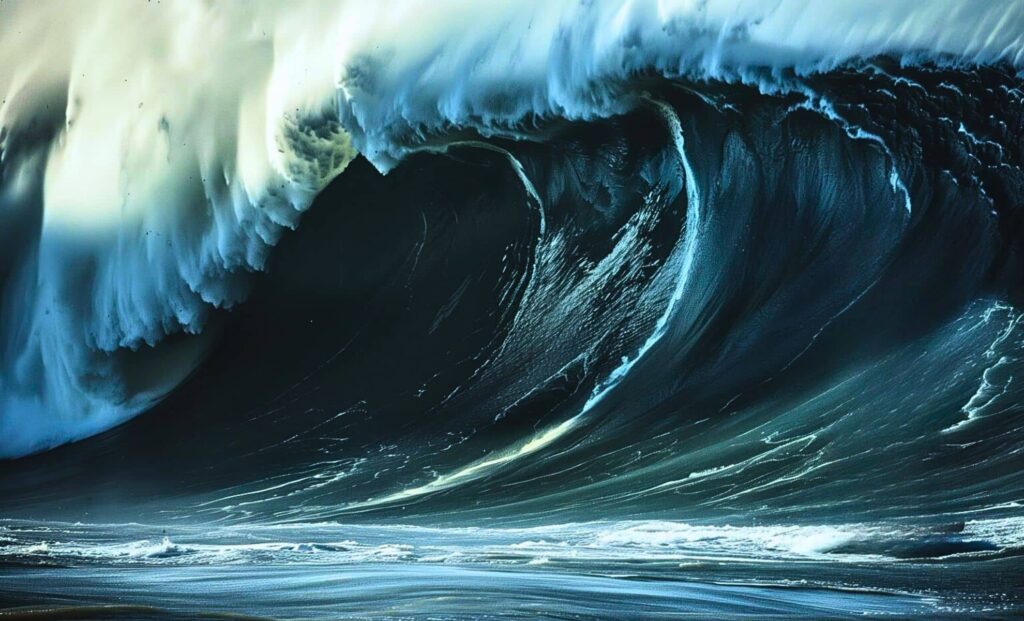In November 2020, a wave the height of a four-story building rose suddenly from the waters off Vancouver Island and crashed into the sea with no warning. It lasted just a few moments. But in those seconds, it defied both maritime tradition and modern science.
The wave, measured at 17.6 meters (about 58 feet), was captured by a remote buoy operated by MarineLabs, just 7 kilometers offshore from the small town of Ucluelet, British Columbia. It wasn’t the tallest wave ever recorded, but it was possibly the most extreme in proportion to its surrounding sea state. Statistically, it should have been impossible. Yet there it was, silently logged into a data stream, unnoticed for months until researchers examined the recording.
Rogue waves, often described as “walls of water,” have long-lived in the blurry space between myth and science. Sailors have reported them for centuries—waves so big and abrupt they swallowed ships whole. But until recently, they were dismissed as folklore. That changed with the Draupner wave in 1995, a 26-meter rogue wave that struck an oil platform in the North Sea and was the first to be confirmed by instruments.
An Ocean Phenomenon Once Thought to Be Folklore
Rogue waves are defined by their disproportionate size—typically, waves that are at least 2.2 times taller than the surrounding wave field. The November 2020 wave reached a peak crest height nearly three times the surrounding waves. According to a study published in Scientific Reports by researchers at the University of Victoria, the odds of a wave with this level of extremity occurring are once in 1,300 years, based on second-order wave theory.
In simpler terms, this wasn’t just rare—it was almost impossible.

Unlike storm surges or tsunamis, rogue waves don’t need tectonic shifts or hurricanes to form. They appear in open water, often without warning, and can be lethal to ships, oil rigs, and offshore wind farms. What makes the 2020 wave even more alarming is that it occurred in moderate weather conditions, making it even harder to anticipate.
“This wave was something we’d expect once every several millennia,” said Dr. Johannes Gemmrich, a physicist and co-author of the study. “And yet, there it was—recorded clearly in near-shore waters, close to human activity.”
Not Driven by Instability—But by Randomness
Traditional rogue wave models frequently point to modulational instability, a phenomenon where waves concentrate energy and grow unpredictably. But the Ucluelet wave didn’t follow that rulebook. Instead, it was generated by a random superposition of waves—essentially, a perfect alignment of energy from multiple wave systems that momentarily stacked on top of each other.
This process, described in the Scientific Reports paper, shows that rogue waves can form without warning even when the sea appears relatively calm. The research used Monte Carlo simulations and Stokes wave theory—models accounting for nonlinear wave behavior up to the fourth order—to replicate the conditions that could produce such an extreme spike.
What the study ruled out was equally important. The so-called Benjamin-Feir Index (BFI), a commonly used risk predictor based on wave group instability, showed low predictive power for this event. That finding has implications for how shipping and energy industries assess danger zones in the ocean.
Forecasting Risk With a New Tool
While predicting individual rogue waves remains impossible, the study offers a promising method to estimate risk probability. A new metric, called crest-trough correlation (r), showed strong correlation with rogue wave events and can be derived from standard wave forecast models like WAVEWATCH III.
In areas where r is high, wave fields tend to be more “groupy,” meaning waves arrive in clusters rather than evenly spaced. Such conditions are more prone to create rare giants. As climate change warms the oceans and alters wind patterns, scientists warn that rogue wave risks could rise, particularly in the North Pacific.
“We’re entering a time where understanding the statistics of rare events is becoming more important than ever,” Gemmrich noted.

